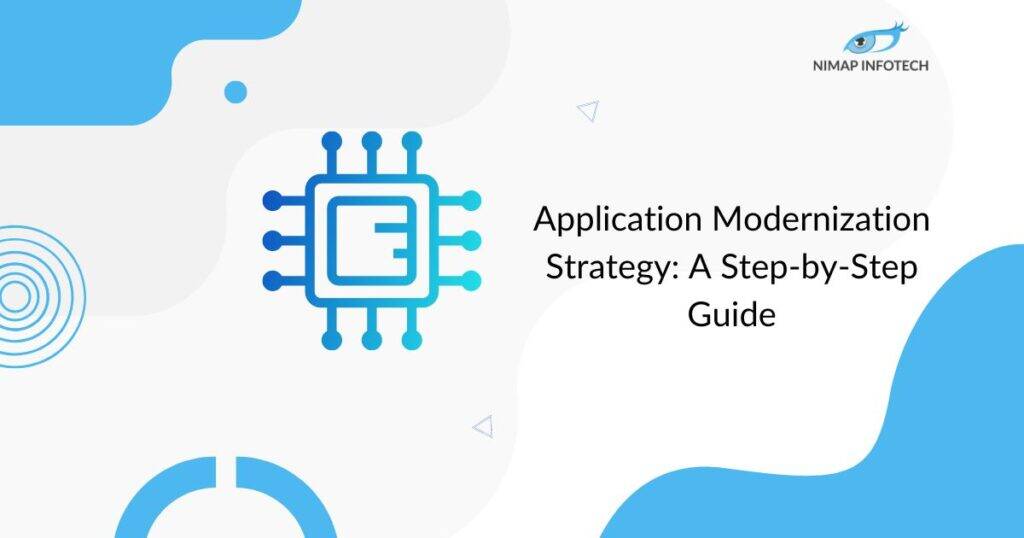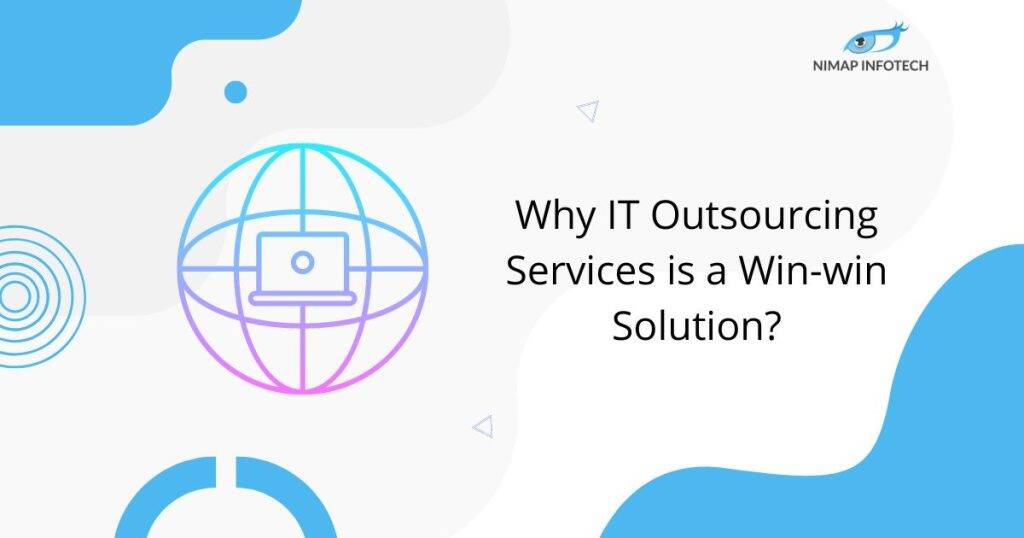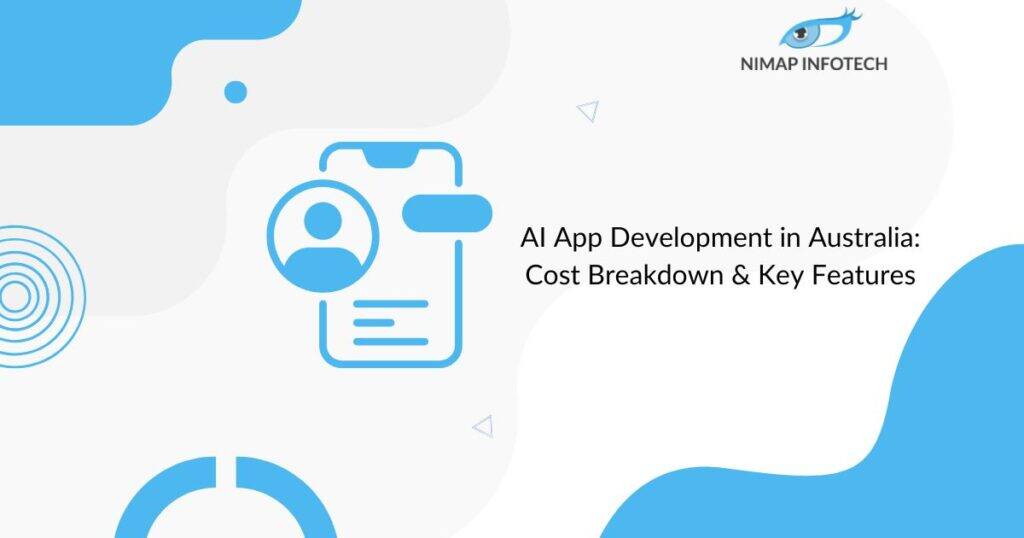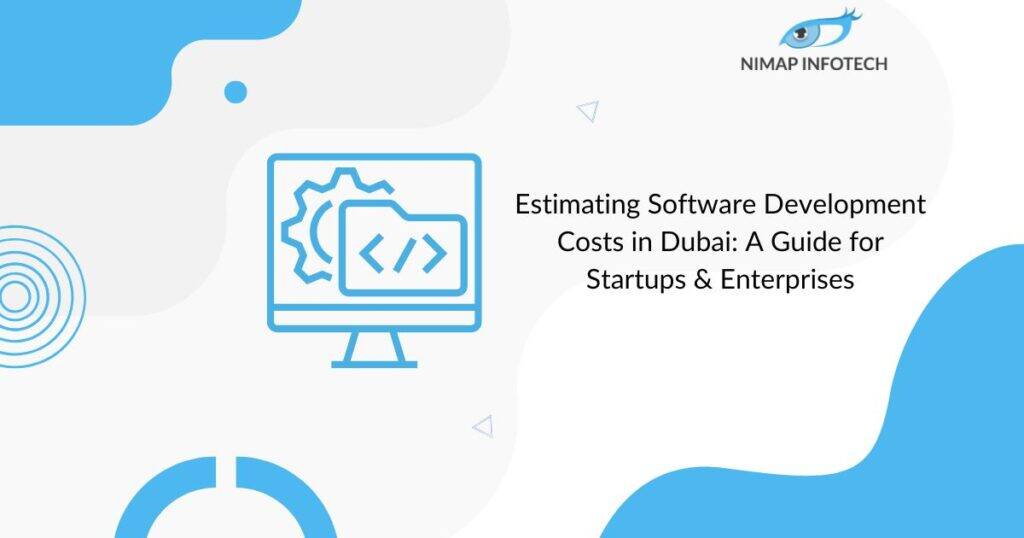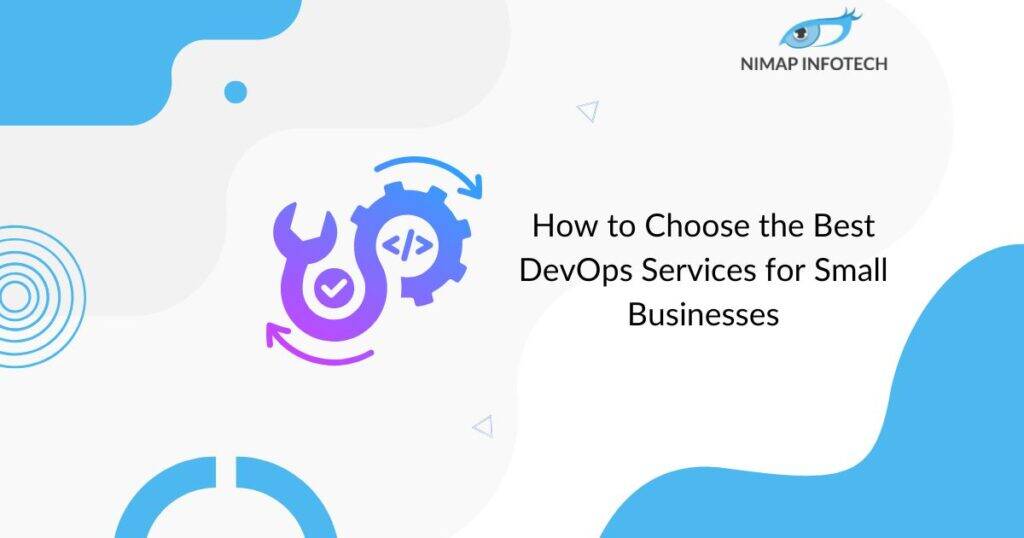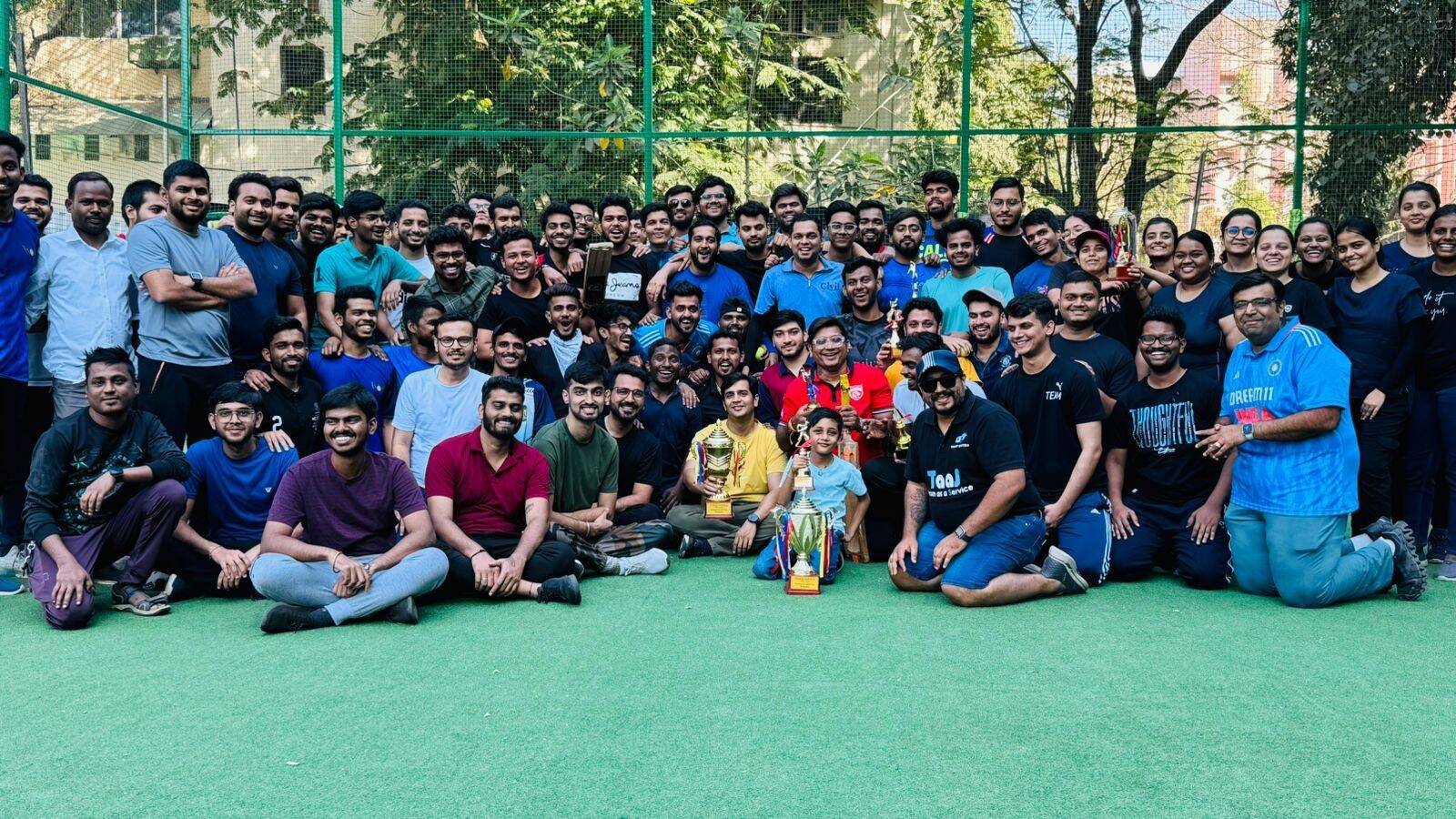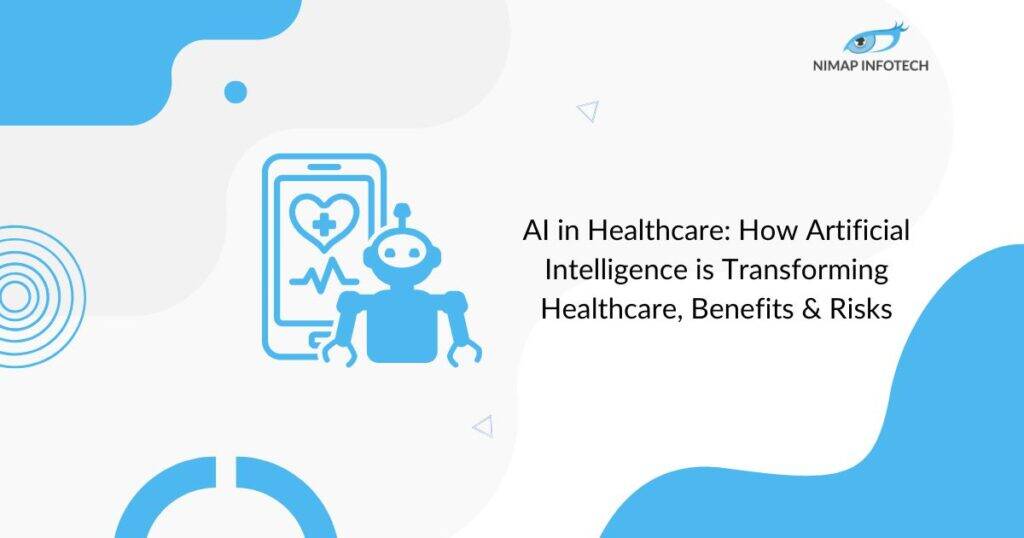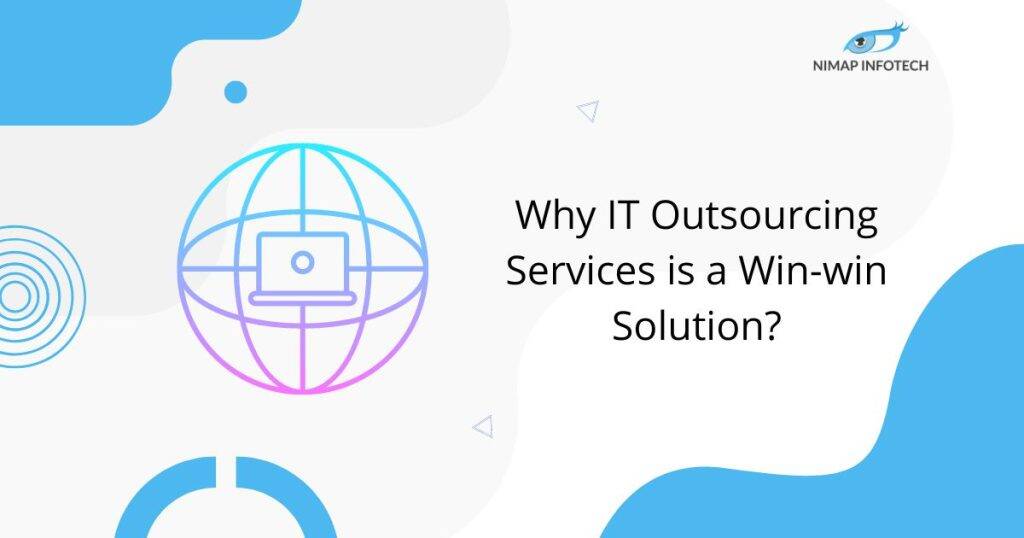Legacy systems that once fueled your business growth can eventually become obstacles to innovation. Around 92% of companies are actively engaged in or planning application modernization initiatives. Legacy modernization is a complex task, especially for large enterprises and software vendors, as it involves the modernization of existing applications. To succeed, you need a well-executed strategy. A strong application modernization plan ensures a smooth transition to a modern, efficient software environment, overcoming challenges and complexities. To achieve successful application modernization, businesses need expert Application Modernization Services.
Modern businesses rely on applications, but legacy systems can hinder growth and innovation. Application modernization updates outdated systems with current technologies, aligning them with modern business needs and goals. This blog provides a step-by-step guide to legacy systems and application modernization, showing how it can drive business growth. The blog covers aspects like application modernization. Why is it important and proven strategies that make it a big hit in recent times?
Table of Contents
ToggleWhat is Application Modernization?
Application modernization is a process that goes beyond the fundamental shift of how you approach your legacy applications, and how you transform them into more adaptable, cloud-ready solutions with the use of the latest application modernization technology. Modernization has changed along with technological advancements. Application modernization techniques involve containerization, cloud-based deployments, and breaking down large, monolithic apps into smaller, autonomous microservices. Modern technologies like serverless services and artificial intelligence may be integrated to enhance business capabilities that are currently unattainable with current applications.
Why Do We Need Application Modernization?
A roadmap for application modernization entails repurposing, reorganizing, or combining obsolete software or programming to maximize the business value of present applications and better match them with the demands of the business today. Developing cloud-native architectures and deployment patterns from monolithic, on-premises systems is the primary goal of many IT modernization initiatives. More agile, waterfall-inspired modernization techniques take the role of traditional onsite maintenance and updates in new development methodologies like DevOps and microservices. Therefore, this step is crucial as it demands substantial time and money to meet new business needs while maintaining legacy applications. This issue is made worse by software that ages and becomes incompatible with contemporary computers.
Here’s Why Application Modernization is Important
Increased Flexibility and Agility
Modern applications are created to be flexible, contemporary applications enable your business to react quickly to changing client needs, industry trends, and technology breakthroughs. Legacy systems can hinder innovation by tying a company to outdated procedures, hindering the ability to seize new opportunities.
Enhanced Effectiveness of Operations
Your business may operate more efficiently, spend less on maintenance, and get rid of the inefficiencies brought on by outdated systems by modernizing your apps. This enhances your profit margin and allows you to allocate resources for crucial expansion strategies.
Decreased Mechanical Stress
The decrease in labor is one of the modernizations of apps’ most immediate advantages. You may modernize all those tiresome manual and repetitive tasks that eat up your resources. As they depended on out-of-date software versions, legacy systems frequently required ongoing maintenance and updates, which resulted in a convoluted codebase and significant regression testing.
How Application Modernization Reduces Manual Testing by Automating Processes
Application Alignment With Current Needs
The greatest application modernization techniques can assist you in bringing your legacy application into compliance with current requirements and larger corporate objectives. And this must get the financing and assistance it needs. Modernization initiatives become essential to the success of the company when they support the creation of income, the expansion of the market, or other high-level goals. Update an old e-commerce app with AI prediction, personalized suggestions, buy-in options, in-app payment, and fast delivery for improved user experience.
Increased Protection
Application modernization enhances security by utilizing the latest frameworks and infrastructure, which are regularly patched and updated. This enables enterprises to apply cutting-edge security procedures as they become available and patch vulnerabilities. Implementing the latest application security methods, such as zero-trust architectures, helps protect critical information and maintain client confidence.
Monitoring and Enhancing Performance
Constant observation as the roadmap keeps tabs on developments evaluates performance about goals, and permits deviations to stay on course. Firstly, the roadmap identifies development areas, then streamlines procedures, and finally enhances modernization effectiveness by evaluating progress and performance.
Key Considerations for Application Modernization
Several crucial business factors, such as operational continuity, cost, return on investment, customer expectations, and more, are at risk while modernizing an application. An unsuccessful application modernization plan can significantly impact these business elements. Therefore, to guarantee the success of the modernization process, firms must carefully evaluate several variables.
Integration and Compliance
Systems or applications with significantly different technologies struggle to integrate effectively. During application modernization, the dedicated team must ensure that the updated app connects smoothly with the organization’s existing systems, software, and data. This requires both technical and operational integration to sustain workflow efficiency and preserve data integrity. Additionally, to comply with legal obligations, regulatory standards, and industry requirements, it’s important to establish organizational guidelines that cover data protection, privacy, security, and operational practices throughout the modernization process.
ROI Evaluation
Achieving a positive return on investment is the ultimate objective of businesses or organizations preparing for application modernization. Assessing the potential for operating and maintenance cost reduction is the first stage in a return on investment study. Next, evaluate how the updated legacy application can improve operational productivity and staff efficiency, both of which will eventually increase return on investment. Compute the time saved by processing information more quickly, having less downtime, or having quicker access to it. Finally, but just as importantly, consider how enhanced flexibility and scalability might help your company grow in the future.
Set Update Priorities
Determine which components or applications require modernization first, taking into account the cost, technical viability, and business impact.
Selecting the Appropriate Modernization Method
This could include re-platforming, re-hosting the program, rebuilding the codes, or replacing the app completely. Migrating apps to the cloud to take advantage of its scalability, flexibility, and affordability is known as cloud migration.
Adopting Modern Architecture
To improve flexibility and ease of integration, microservices, containerization, and API-driven development are implemented.
Expenditure Review
Before embarking on application modernization, a thorough review of expenditures is essential, covering everything from budget planning and potential ROI evaluation to cost assessment and risk management. Key aspects of modernization expenditure typically include:
- Comparing current maintenance and operational costs with projected modernization expenses.
- Allocating budgets for development resources, software licenses, training, server costs, and any unexpected expenses.
- Identifying and reducing financial risks associated with the modernization process.
- Accounting for indirect costs linked to maintaining the legacy application.
Constraints in Data Management
Large volumes of data must be moved, stored, and managed as part of the app modernization process, which emphasizes the significance of security, accuracy, integrity, compatibility, and accessibility at every stage. To ensure data quality and integrity, analyze available data, assess accessibility, ensure privacy compliance, secure data, and establish a data governance structure.
Key Strategies for Transforming Legacy Systems
Thorough planning and execution are necessary for the successful implementation of an application modernization strategy. Implementing application modernization techniques can speed up processes and improve results, especially in the face of legacy apps that may hinder growth. Implementing a modernization strategy can increase revenue and set you apart from competitors.
How Can One Modernize Their Legacy App?
Your company’s success can be revolutionized by modernization, but it must be done correctly. Assess funds, allot resources, select appropriate instruments, and cultivate a transformational environment. Furthermore, think about collaborating with a modernization specialist who can help you along the way.
Steps to Follow for a Successful Application Modernization Strategy
To modernize legacy systems, hire developers from Nimap and follow a roadmap. The process can be challenging, but with proper guidance, it becomes a successful strategy.
Develop a Strategic Plan and Roadmap for Your Legacy Apps Before Starting Application Modernization
Start by identifying and ranking your most important business requirements. Next, list your goals and compile a list of your legacy apps. Lastly, create an application modernization strategy that is business-focused by utilizing the insights you have obtained.
Establish Your Goals
Establish specific goals for modernization and decide which key performance indicators (KPIs) will be used to gauge your progress. Clearly state your objectives and record the results you anticipate.
Take Stock of Your Apps
Create a comprehensive inventory of all outdated programs that require updating, considering their dependencies, architecture, and data requirements.
Examine Your Legacy Code
Begin by recording the current dependencies, business logic, and code architectures. Next, search for areas where you may make improvements, like reducing code complexity, mitigating security vulnerabilities, and easing integration challenges.
Formulate Your Modernization Plan
Decide which of these apps is most important to the business, and start the modernization process there. Important elements of a modernization strategy for applications consist of.
Alignment of Business
It is crucial to match modernization initiatives with corporate aims and objectives. Collaborate with many departments inside the company to comprehend industry trends, consumer wants, and your organization’s unique requirements. Next, order the modernization projects according to their business value.
Analyze
Assess the condition of your most important legacy apps at the moment. Determine the areas that need improvement, technical debt, and pain points. Incorporate elements like scalability, performance, security needs, and system compatibility with current technologies.
Five Easy Steps for Effective Application Modernization of Legacy Systems
It can be quite difficult to plan and carry out a broad application stack modernization. It is advisable to adhere to these five stages methodically while updating your most crucial business applications:
Decide on the Architecture
Recognize your architectural possibilities and choose the framework, or frameworks, that best suits your particular set of requirements.
Determine Important Technologies
Select the latest frameworks, technologies, and third-party platforms that will give your company the best tools at the lowest possible cost. Next, draft an elaborate implementation strategy. When appropriate, employ artificial intelligence (AI) technologies. Recognize how AI capabilities can support your modernization initiatives and incorporate them into your plan.
Update Your Most Important Applications
Start modernizing your most important business applications first.
Evaluate and Iterate
As your applications are updated, keep an eye on them and gradually expand their functionality. It will be much simpler to introduce additional features once they are more flexible and agile.
Choose Your Application Modernization Approach
Based on the goals that have been established and the assessment of the old system, choose the best application modernization approach. The following are the app modernization tactics that are frequently used.
Rehosting (Lift and Shift)
To increase scalability and maintenance simplicity, move current apps to the cloud without altering their codebase.
Refactoring / Re-architecting
To enhance performance, scalability, or architecture, reorganize or rebuild the application’s codebase without completely rewriting it. Re-platforming is the process of moving programs with little to no code changes to a new runtime platform.
Repurchasing (Replace)
Use a commercial off-the-shelf (COTS) solution to replace the outdated program. Decommission obsolete or superfluous applications upon retirement.
Retaining (Revisit)
Proceed with the use of current applications while reviewing their applicability and future directions regularly.
Partner with Nimap for Seamless Application Modernization
As a top company for application modernization, we enable companies to utilize cutting-edge technology and cloud solutions to realize the full potential of their current software. Our all-inclusive services include smooth cloud migration, application re-engineering, code reworking, redesigning, and re-architecting. Supported by an experienced group of engineers, designers, and project managers, we use tried-and-true techniques along with strategic thinking to modernize legacy programs with the least amount of downtime. Get in touch with our team right now to find out how we can help you with your app modernization journey and improve your applications for increased productivity and efficiency.
Read More: Digital Transformation Strategy: A Complete Guide
Author
-

With 14+ years in IT and entrepreneurship, I co-founded Nimap Infotech, a digital transformation company that has delivered 1200+ projects and built a team of 400+ engineers. I’ve also led mobile development teams at Accenture India and IBM Apple Garage and developed a network of 7k+ iOS and Android developers. As an Angel Investor, tech advisor, and mentor, I actively engage with the startup ecosystem.
View all posts

